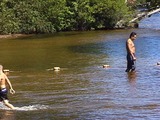
The summer solstice is on June 21 or 22. This is the longest day of the year in the northern hemisphere.
- Subject:
- Science
- Material Type:
- Media Object
- Provider:
- Utah Education Network
- Author:
- Visual Learning Company
- Date Added:
- 02/28/2010

The summer solstice is on June 21 or 22. This is the longest day of the year in the northern hemisphere.
The vernal equinox is on March 20 or 21 in the northern hemisphere. There are 12 hours of daylight and 12 hours of darkness on the vernal equinox.

This is a lesson for preschool students. In this lesson, students will learn about the importance of eating healthy and how to make good food choices. They will learn about the five food groups and be able to categorize food into the correct food groups. This lesson follows the following core standards: Strand 4: Nutritions- Students will understand why food choices are important, Standard HE 4.1 Identify a variety of healthy foods, Standard HE 4.2-Identify healthy food and begin to categorize into food groups, Standard 4.3 Try new foods from a variety of food groups.Image Citation: food healthy flyer landscape by yellow bananas from Canva created by Suzanne McMillan

This lesson plan is for a multi-class period project where student groups plan and create their own videos highlighting different forms of public energy production. This is part of an Energy Conservation unit in HS physics, but could be adapted for junior high students.All resources are the original work of the author. Sound effects and musics in the Producing Your Energy Video instructional video provided free of charge in Adobe Rush.

Rapid Climate change is a big problem. Luckily, it's one we can tackle. But it will take the work of every nation on earth, especially the ones with lots of power plants, cars, and factories, and other things that use lots of energy. As you can see, China and The United States make most of the carbon dioxide. That means that the leaders of those nations, along with the others, have a special responsibility to reduce carbon dioxide and keep the planet livable in the future
Rapid Climate Change affects the whole planet. But you might be surprised to know that one person, meaning you, can make a big difference. Doing your part to help the planet cool down starts with understanding something called your "carbon footprint". Your carbon footprint is the amount of carbon dioxide created by the stuff you do in your daily life. If you're like most Americans, you consume energy for things like heat, light, surfing the web, watching TV, and getting from place to place in a car. Plus, the stuff you buy and use takes energy to make and deliver, so you're consuming energy when you, say, buy a hamburger, or a kiwi.

Planet Earth. It sure is beautiful, and it's also very unique and special, because under its thin atmosphere, it supports life. But there's a problem. Did you know that the Earth is sick? It has come down with a fever. In fact, the last ten years were the hottest ever recorded. This never-before-seen warming is part of something scientists call “Climate Change.” But what could cause our whole planet to get sick? And what is climate, anyway? Have humans played a role in changing it? What’s bad about climate change, and how can we stop it from getting worse? In this video series, we answer these questions and more.

People are experiencing climate, which is related to the weather, but there’s an important difference. That difference is really just a matter of time. Weather happens day to day, even hour to hour, and is still pretty unpredictable. Climate happens over longer periods of time -- 30 years and longer -- and is usually predictable. In a nutshell, climate can be described as the average weather over time.
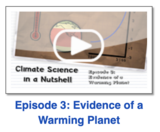
You might not know it, but many of the things we take for granted come from the work of scientists. Take an x-ray machine, for example. It can peer into our bodies, helping doctors identify broken bones. Thousands of scientists around the world have developed tools to see changes to the Earth over time. Just like an x-ray, these tools help us learn things we might not be able to see otherwise. For example, Paleoclimatologists examine air bubbles trapped in ice, to determine climate conditions from thousands of years ago. Paleoclimatologists know that the Earth warmed up about five degrees Celsius starting about 15,000 years ago. That warming happened pretty gradually, over about 5,000 years. The problem we have now is that the Earth is warming up nearly that much over just a couple of hundred years. It’s as if the stove was suddenly turned up.
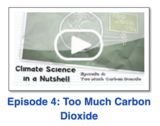
One thing that makes life on Earth possible is a thin layer of gases called the atmosphere. It holds in the air we breathe and protects us from the cold of outer space. When energy in the form of light reaches us from the Sun, it streams through the atmosphere, making plants grow and lighting up our days. In addition to light, the Sun also delivers heat, which warms the planet. But much of that heat is reflected back towards space.
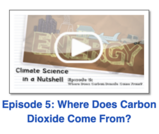
Back in the 18th century, people started burning coal to power a new invention: steam engines. But here’s something curious: Ever since steam engines were widely used, starting in about 1850, carbon dioxide in the atmosphere began to climb. Today it stands at 392 parts per million. Parts per million is a special measurement scientists use. 392 is WAY more carbon dioxide than we’ve had for many thousands of years, and the number continues to rise. So where does the extra carbon dioxide come from?
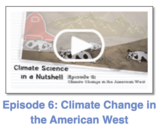
Rapid climate change isn’t something that will happen in the future. It’s a problem that started when your grandparents were young. That means that today some of the early effects are happening all around us. In the mountains of the American West, warming temperatures are already having a big effect on the delicate balance of life.
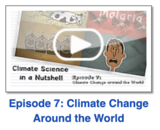
From extreme weather to threatened ways of life, the effects of climate change are real, and they are happening right now around the globe. As the Earth warms, the atmosphere contains more energy and moisture. These drive extreme weather, such as crippling heat waves, heavier rains and more powerful hurricanes. It even causes severe drought in some places -- because a warming Earth increases evaporation, too, drying out some places and causing a lot more dust and particles to get in the air. In the mountains of the American West, warming temperatures are already having a big effect on the delicate balance of life.

Oceans cover about 70 percent of the planet, and they are bursting with life. At least 230,000 species live here, but our oceans are deep and truly massive, and scientists suspect there could be ten times that amount. Life on land is dependent on the oceans, too. Water that evaporates from the oceans is the largest source of rainfall on the planet, and their gigantic, swirling currents of warm and cold water drive many of the climate and wind patterns that affect life on land. And of course, people depend on the oceans as a vital source of food.
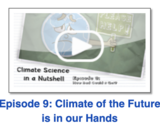
We already know that Rapid Climate Change is happening, but how bad could it get? The answer lies with us, human beings. That's because the decisions we make now will determine if the effects of Rapid Climate Change are mild or extreme. Scientists who study the climate tell us that if we continue to add carbon to the atmosphere at the current rate, the Earth will get a lot warmer in the coming years and decades. They use big, brainy computers to simulate what the climate will look like in the future.
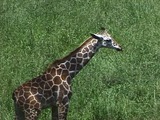
African savannas are home to huge herds of grazing animials including giraffes and zebras.

In this eMedia tutorial, Katie Blunt helps you discover curated topics and popular content with eMedia collections. Find out how collections can be useful to you and your classroom! (May 2021)

Research project and presentation based on the novel The Magic Strings of Frankie Presto by Mitch Albom.

This lesson is for art teachers interested in brining film making into their setting. Students will be asked to create a piece that looks at their "purpose." It should be treated a celebration of the student, where others identify strengths of their classmates, and create a film on it.

Get ready to be inspired by Utah's creative and diverse student filmmakers in this episode of Students in Focus! In this filmmaker spotlight, we hear from a music video director who started in action sports, he shares his story about how his film career grew into what he's most passionate about today.